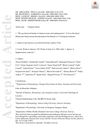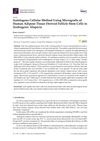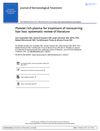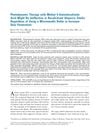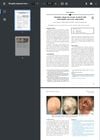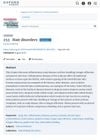Treatment of Androgenetic Alopecia with 5-Aminolevulinic Acid Photodynamic Therapy: A Randomized, Placebo-Controlled, Split-Scalp Study of Efficacy and Safety
August 2021
in “
Photodiagnosis and Photodynamic Therapy
”

TLDR Using 5-aminolevulinic acid photodynamic therapy for hair loss didn't increase hair growth but slightly reduced scalp oiliness, and it was safe with mild side effects.
The study titled "Treatment of androgenetic alopecia with 5-aminolevulinic acid photodynamic therapy: A randomized, placebo-controlled, split-scalp study of efficacy and safety" conducted a randomized, placebo-controlled, split-scalp clinical study on 7 subjects with androgenetic alopecia (AGA). The subjects received six sessions of 5% 5-aminolevulinic acid photodynamic therapy (ALA-PDT) on one half of their scalp and red-light therapy on the other half. The results showed no significant difference in hair density between the red-light treatment and ALA-PDT treatment. The hair density in the ALA-PDT treated half of the scalp significantly decreased 1 week after the treatment, then it increased, and no statistical difference was found at 12 weeks after the last treatment compared to the baseline. The main adverse effects in ALA-PDT treatment were mild edema and tolerable pain, and no adverse effect was observed in red-light treatment. The study concluded that 6 sessions of 5% ALA-PDT did not increase the hair growth of AGA patients, but slightly suppressed the sebum secretion on the scalp. The adverse effects of ALA-PDT were mild, indicating safety and tolerability of this treatment.


